Top 8 Superfoods for 2020
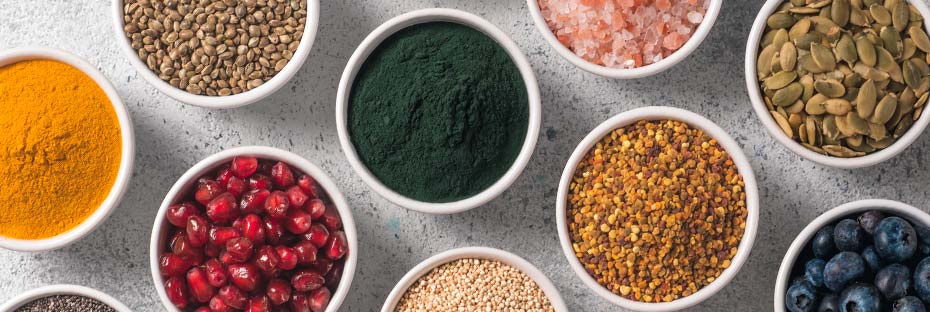
Author Aiden Goggins, BPharm, MSc NutrMed Last updated 26th November 2019
- Ingredients & Nutrition
Eat yourself into shape this coming year with the best and tastiest of the latest superfood stars.
Looking to eat yourself healthy in 2020? Exercise and a balanced diet should always be top of your to-do list, but make a habit of including these ingredients in your diet and you’ll stay ahead of the game in the healthy eating stakes. Here are the latest (and yummiest) superfoods to help you on your way to a future-friendly lifestyle, as recommended by top pharmacist and medical nutritionist Aidan Goggins, author of The Health Delusion.
- Wakame Seaweed

This leafy green from the sea is delicious in cold salads or as a garnish for rice, soups, fish or tofu, with a deep and satisfying umami flavour. It’s also a rich source of iodine, and most of us in the UK, especially young women and vegans, are deficient in this vital nutrient that keeps our thyroid healthy and metabolism ticking over.
- Purple Potatoes
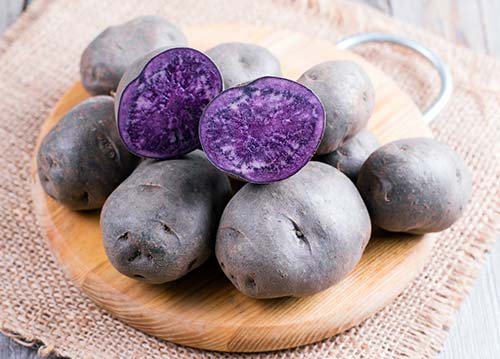
Give your mash an eye-popping purple twist. Beautiful in any dish, the striking violet shade of this prince of potatoes may not bring a dramatic flavour difference, but its powerful pigment is packed with anthocyanins, the same heart-friendly compound found in many kinds of red berries, grapes and red cabbage. Anthocyanins can help to lower the risk of heart disease and strokes.
- Turmeric

Loved for its warm, earthy flavour and the golden tint it brings to curries, dals and other South Asian dishes, turmeric has found many uses over the millennia in everything from food to cosmetics. It has at least 53 Sanskrit names describing its numerous properties, from patwaluka (perfumed powder) to kanchani (exhibits golden colour). You can reap turmeric’s golden glow by adding it not just to curries but smoothies and scrambled eggs for its primary active ingredient, curcumin.
- Kefir
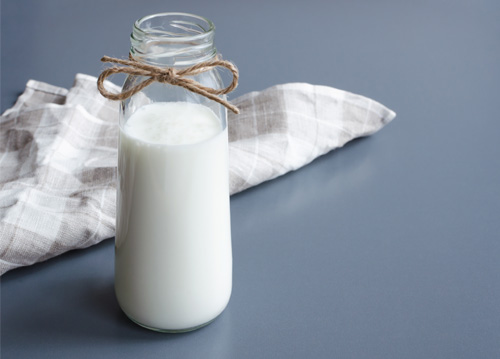
The new must-have recovery drink for athletes, kefir is a rich protein source while promoting intestinal health and immunity, which can become strained after strenuous exercise. A fermented milk drink similar to a thin yoghurt, kefir has an enjoyable tart-sour tang and a bit of a natural fizz. It’s traditionally made from cow’s milk but these days you’ll find kefir to suit all audiences, with dairy-free alternative milks like coconut, rice and soy available too.
- Popcorn
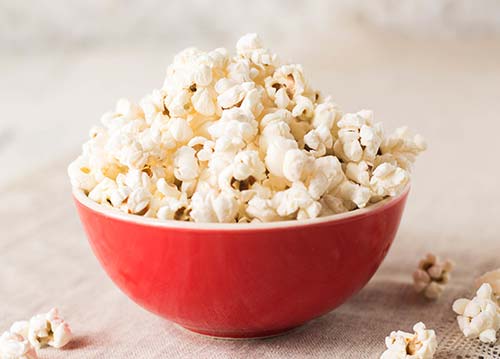
Going to the movies could be worth it just to enjoy this blockbuster. Making sure you get ‘5 a day’ has become a lot easier to achieve thanks to research 1that shows popcorn contains even more healthful antioxidants, called polyphenols, than traditional fruit and vegetables. Plus it’s low in calories while being rich in fibre, making it a great snack choice for curbing hunger too.
- Oyster Mushrooms

Silvery-grey or greyish brown, this unassuming common edible mushroom is actually categorised as a medicinal mushroom because of its valuable health properties. Subtle in flavour, it’s fat-free and low in calories but high in protein, fibre and minerals, including iron, zinc and potassium and B and D vitamins. It also offers an effective alternative treatment for atherosclerosis,or clogged arteries. Make sure to pop some in your next soup or stir fry.
- Broccoli Sprouts
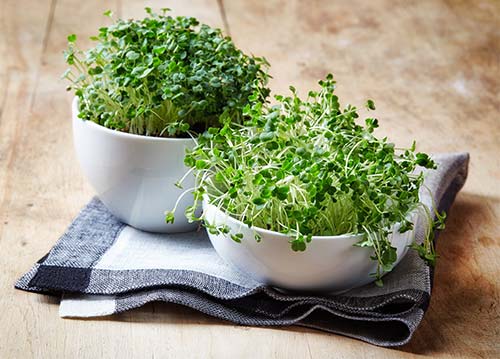
Little broccoli, big benefits. Easy to eat in everything from salsas to smoothies, broccoli sprouts contain up to 50 times more of the powerful nutrient sulforaphane than mature broccoli heads, with lots of crunchy texture and a radish-like peppery taste. A recent study 2 found daily broccoli sprouts lowered blood sugar in diabetics by 10% more than medicine alone.
- Jerusalem Artichoke

A super-rich source of the prebiotic inulin, which increases good bacteria in the gut. A fascinating 2019 study 3 found that individuals who eat inulin-rich vegetables even experience diet behaviour changes, reporting greater satisfaction and a drive to eat a healthier diet. Not only that, it’s hugely versatile ingredient: fabulous when blended in soups or mashed, roasted, sautéed, steamed, boiled or fried. They’re just as tasty eaten raw too, sliced up sweet and crunchy for salads.
References
- Coco MG Jr, Vinson JA. Analysis of Popcorn(Zea mays L. var. everta) for Antioxidant Capacity and Total Phenolic Content. Antioxidants (Basel). 2019;8(1):22. Published 2019 Jan 14. doi:10.3390/antiox8010022
- Axelsson A.S. et al. Sulforaphane reduces hepatic glucose production and improves glucose control in patients with type 2 diabetes. Sci Transl Med. 2017 Jun 14;9(394). pii: eaah4477. doi: 10.1126/scitranslmed.aah4477
- Hiel S. Bindels L. Pachikian BD. Kalala G. Broers V. Zamariola G. Chang B. Kambashi B. Rodriguez J. Cani PD. Neyrinck AM. Thissen JP. Luminet O. Bindelle J. Delzenne N. Effects of a diet based on inulin-rich vegetables on gut health and nutritional behavior in healthy humans. Am J Clin Nutr. 2019 Jun 1;109(6):1683-1695. doi: 10.1093/ajcn/nqz001
